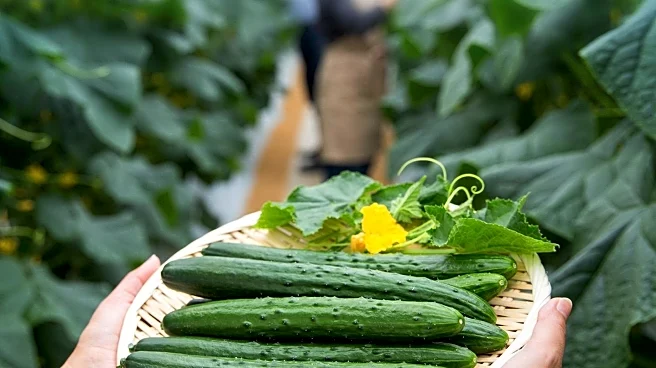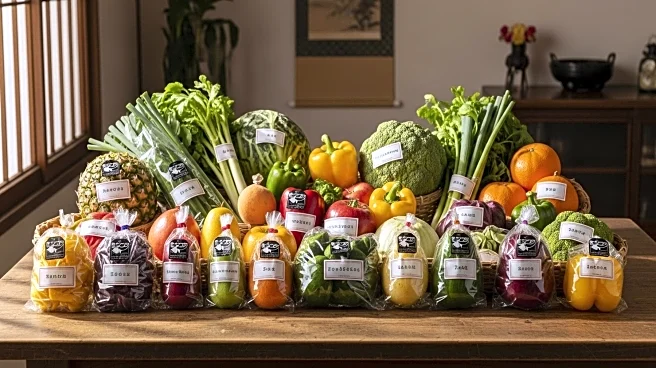What is the story about?
What's Happening?
Japan's agriculture ministry is set to introduce multilingual food labels to make food products more accessible to foreign tourists. The initiative, starting as a trial in 2026, will initially include English translations alongside Japanese labels, with plans to expand to other languages. This move aims to address the language barrier that foreign visitors face when navigating food labels in Japan, enhancing their experience and promoting Japanese food products globally.
Why It's Important?
The introduction of multilingual labels could significantly benefit Japanese food companies by expanding their global reach and simplifying labeling processes. By targeting a wider audience, these companies can increase sales in international markets where English and other major languages are spoken. The initiative also supports consumers with dietary restrictions, providing transparency and ensuring they can make informed choices. This effort aligns with global standards, potentially opening new markets for Japanese food products.
What's Next?
The pilot program will focus on non-perishable foods, such as matcha tea snacks and dried noodles, to evaluate the effectiveness of multilingual labels. If successful, the initiative could lead to broader adoption across various food products in Japan. The agriculture ministry will assess feedback from consumers and manufacturers to refine the labeling system, ensuring compatibility with international regulations.
AI Generated Content
Do you find this article useful?













